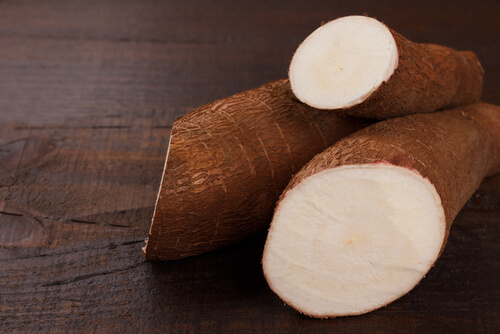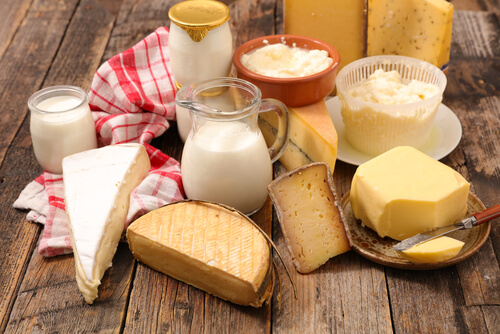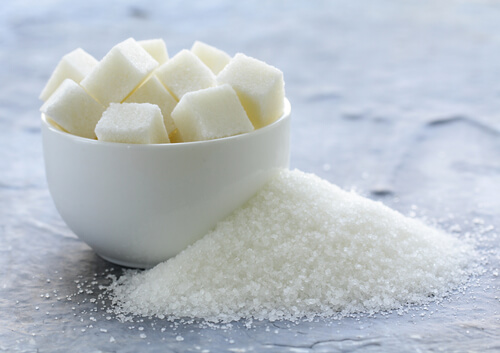Cassava, Oat and Chocolate Bread Without Gluten, Lactose or Sugar

There is more and more popular demand for recipes free of gluten, lactose and sugar, both for health reasons and due to the desire to eat more healthily. The cassava, oat and chocolate bread recipe that we’re going to share in this article is a delicious option to satisfy the craving to eat sweet things free of regrets.
Discover the simple steps to prepare this cassava bread that everyone will like.
What is cassava?

Cassava, or yucca, also known as manioc, is grown in hot climates like South America, Central America and Africa.
We eat the root of the plant, which is rich in starch. Many recipes can be made with the flour of this starchy root, especially baked goods.
The great advantage of cassava for many people is that it does not contain gluten. In fact, this recipe is similar to other kinds of breads made with cassava that are made in some countries like Colombia or Paraguay.
There are two varieties of cassava: bitter and sweet. For this recipe, we’re going to use the latter.
It is essential to highlight that cassava should never be eaten raw, as it can be toxic for the health.
Read also: 9 Amazing Medicinal Properties of Yucca
Are dairy products good for us?

There are different factors that influence the consumption of dairy products:
- The milk and dairy derivatives that we eat today tend to be fairly unhealthy products due to the quantity of added substances like hormones and antibiotics.
- Organic dairy products from cows raised freely are the exception.
- Many people can’t digest lactose well because, over the years, we tend to lose the enzyme lactase from our body.
- Dairy products are related to the accumulation of mucous in the respiratory tracts.
- Some people experience swelling of the face or the body if they consume dairy products at night.
- They can cause skin problems like dermatitis, psoriasis, etc.
That said, some people can consume milk and dairy derivatives for their whole life with none of these problems.
Better without sugar

If we want to feed ourselves healthily we should acquire the good habit of reducing our intake of sugar and the sugary foods that we eat every day.
If we could see the sugar that is hidden in the drinks and sweets we consume each day we would be surprised by the quantity.
Instead, whenever possible, we can choose products sweetened with honey, cane syrup, stevia, agave syrup, coconut sugar, etc.
Our palette will gradually get used to these new flavors as we lose our addiction to sugar.
See also: 10-Day Sugar Detox Diet
Cassava, oat and chocolate bread
Ingredients
- 3 eggs
- 2 cups of cassava flour (300 g)
- Two cups of oatmeal (90g)
- 2 tablespoons of vanilla essence (30 g)
- 1/2 cup of mild olive oil, sunflower oil or coconut oil (110 g)
- 2 cups of coconut, oat or rice milk (without gluten) (500 ml)
- 1/2 cup of agave syrup or coconut sugar (110 g)
- A pinch of sea salt
- 1 tablespoon of yeast powder (12 g)
- Chocolate drops (without milk)
Preparation
- First, pre-heat the oven to 180 ºC.
- To make things easier, you can make this recipe using a blender.
- Start by blending the 3 eggs.
- Add the vanilla essence, salt, sweetener, the vegetable milk and the oil, and blend it again.
- Add the cassava flour and the oats and continue blending it.
- Lastly, add the yeast and blend the whole mix well. It should have a fairly liquid texture.
- We recommend using individual muffin molds, for example those made of silicone, and filling them three quarters full.
- Then add a few chocolate drops to each mold.
- Bake them for 40 minutes at 180 ºC. Check that they are fully cooked before taking them out of the oven.
- If you’ve used silicone molds, take the breads out of the molds so that their bases don’t get soggy.
- Let them cool and then they will be ready to eat.
This text is provided for informational purposes only and does not replace consultation with a professional. If in doubt, consult your specialist.








